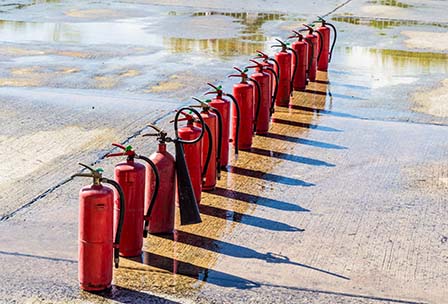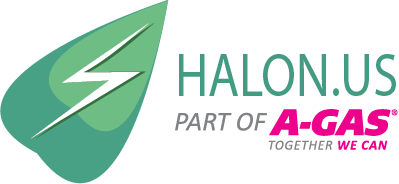10 Aug The 4 Steps of Maintenance for Halon 1301 Systems
 Halon 1301 fire suppressant remains one of the most effective and fast-acting options in the market. However, because of the concerns regarding Halon’s ozone-depleting properties, this fire suppressant is strictly controlled and systems that continue to use it must be thoroughly and carefully inspected on a routine basis. Fortunately, Halon 1301 systems are actually much easier to maintain as compared to traditional dry chemical fire extinguishing systems.
Halon 1301 fire suppressant remains one of the most effective and fast-acting options in the market. However, because of the concerns regarding Halon’s ozone-depleting properties, this fire suppressant is strictly controlled and systems that continue to use it must be thoroughly and carefully inspected on a routine basis. Fortunately, Halon 1301 systems are actually much easier to maintain as compared to traditional dry chemical fire extinguishing systems.
Following are 4 steps of maintenance for Halon 1301 systems:
1. Monthly Visual Inspection
Just like other fire extinguishers, Halon 1301 systems also require monthly visual inspection according to NFPA guidelines. Visually inspecting your Halon fire extinguishers helps ensure the following key points:
• The extinguisher is still present in its designated location
• The extinguisher is fully charged and operational
• No obstructions are blocking the equipment from easy access
• No damage has occurred to the equipment
Following are some things to look for during a visual Halon 1301 system inspection:
• Look for clear signs of any physical damage, e.g. dents, leakage, corrosion, etc.
• Verify the date of the last professional inspection
• Check the pressure gauge. It should be in the operating range
• Check and ensure that the pull-pin seal is intact and the pull-pin is not missing.
• Log the monthly visual inspection from the initial located at the tag
2. Annual Maintenance Inspection
According to NFPA, a full maintenance check on Halon 1301 fire extinguishers is mandatory in a workplace at least once per year. Annual maintenance inspection should be performed by a professional fire protection company as they have the proper training and tools to ensure optimal compliance while identifying and fixing any potentially hazardous situations. During inspection, the pressure of refillable Halon 1301 containers and the quantity of the agent must be checked. If inspection shows a 10% drop in pressure or at least 5% loss in net weight, the system must be replaced or refilled.
3. Six-Year Internal Maintenance Inspection
The internal maintenance should also be performed by a fire protection company. The six-year internal maintenance inspection involves discharging of the Halon fire extinguishers and a complete analysis and recharging to make sure that all the fire extinguisher components are working correctly. In addition to the internal maintenance inspection, Halon 1301 systems must be hydrostatically tested periodically to ensure their integrity as well as their ability to safely contain the pressure required to expel the Halon fire suppressant.
4. Twelve-Year Hydrostatic Test
Just like most other fire extinguishing agents, Halon 1301 also requires a twelve-year hydrostatic test performed by certified technicians. This test simply confirms the integrity of the cylinders and it is generally performed along with the six-year internal maintenance inspection.
Proper testing and maintenance of Halon 1301 systems does more than just fulfill some NFPA requirements – it ensures the safety of your business and your employees. If you have Halon 1301 fire extinguishers installed and they haven’t been inspected in a while, get started toward creating a safer workplace by scheduling a hazard assessment today.
Halon.us is a Halon buying agency, that pays top dollar for Halon 1301, Halon 1211, and FM200, which we purchase for essential uses such as aircraft fire safety systems, in accordance with all applicable environmental regulations. We are known and trusted for being reliable, trustworthy, and making super fast payments. We make all transactions simple and convenient, taking a lot of the work and expenses off of your hands. If you are looking to sell Halon, contact us to see why we are America’s most trusted Halon buying agency. Call (866) 720-5681 today!

Sorry, the comment form is closed at this time.